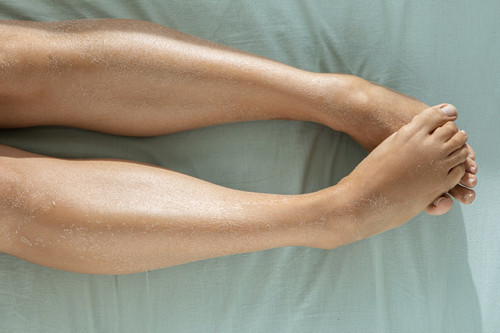Exploring Effective Treatments for Skin Irritation
Posted by Jack Miller on 2nd Mar 2024
Chafing, the bane of comfort seekers everywhere, occurs when friction between skin surfaces or clothing leads to irritation and inflammation. Whether it's the result of intense physical activity, humid weather, or ill-fitting garments, chafing can turn even the simplest of tasks into a painful ordeal. Thankfully, a variety of treatments exist to provide relief and restore comfort. In this blog post, we'll delve into different chafing treatments, offering solutions for every level of discomfort.
Anti-Chafing Creams and Balms
Anti-chafing creams and balms are the first line of defense against skin irritation. These products create a protective barrier between rubbing skin surfaces, reducing friction and preventing further damage. Look for formulations enriched with soothing ingredients like aloe vera, calendula, or chamomile to calm inflamed skin while providing long-lasting relief.
Cornstarch or Baby Powder
For those who prefer a more natural approach, cornstarch or baby powder can work wonders. These powders absorb excess moisture, keeping the skin dry and minimizing friction. Simply sprinkle a small amount onto chafed areas and gently pat it in for instant relief.
Cold Compress
To alleviate inflammation and soothe irritated skin, apply a cold compress to the affected area. A clean cloth soaked in cold water or wrapped around ice packs can provide immediate relief. Avoid applying ice directly to the skin to prevent frostbite or further damage.
Anti-Chafing Thigh Bands
Anti-chafing thigh bands are a revolutionary solution to prevent chafing between the thighs. These elastic bands are worn around the thighs, creating a barrier that prevents skin-to-skin contact and reduces friction. Lightweight and discreet, thigh bands provide continuous protection during physical activity or daily wear.
Hydrocortisone Cream
For severe cases of chafing accompanied by redness and swelling, over-the-counter hydrocortisone cream can be effective. This topical steroid reduces inflammation and relieves itching, providing fast-acting relief. However, use sparingly and as directed, as prolonged use of hydrocortisone can thin the skin.
Aloe Vera Gel
Aloe vera gel is renowned for its soothing properties and is a popular choice for treating chafed skin. Apply a generous amount of pure aloe vera gel to the affected area to hydrate the skin, reduce inflammation, and promote healing. For an extra cooling sensation, store the gel in the refrigerator before use.
Calendula Ointment
Calendula, derived from the marigold flower, has long been used to heal skin ailments, including chafing. Calendula ointment or cream contains anti-inflammatory and antimicrobial properties that help reduce redness and prevent infection. Apply a thin layer to chafed areas several times a day for optimal results.
Tea Tree Oil
Tea tree oil is a potent natural antiseptic and anti-inflammatory agent that can aid in chafing relief. Dilute tea tree oil with a carrier oil like coconut or olive oil, then apply sparingly to affected areas. Be cautious with concentration, as tea tree oil may cause skin irritation if used undiluted.
Thigh chafing may be a common discomfort, but with the right treatments, relief is within reach. From anti-chafing creams and cold compresses to oatmeal baths and natural remedies, there's a solution for every level of chafing severity. Whether you prefer conventional or natural treatments, prioritize comfort and skin health to banish chafing woes and restore tranquility to your daily routine. Remember, prevention is key, but when chafing strikes, these treatments will help you bounce back with ease.

